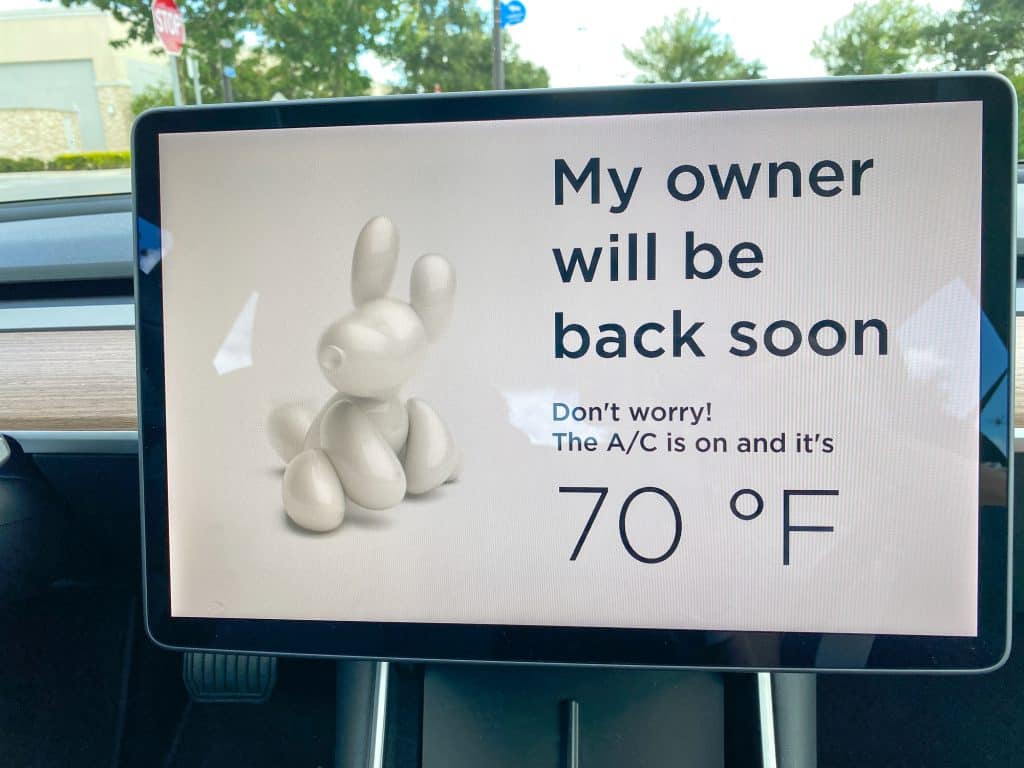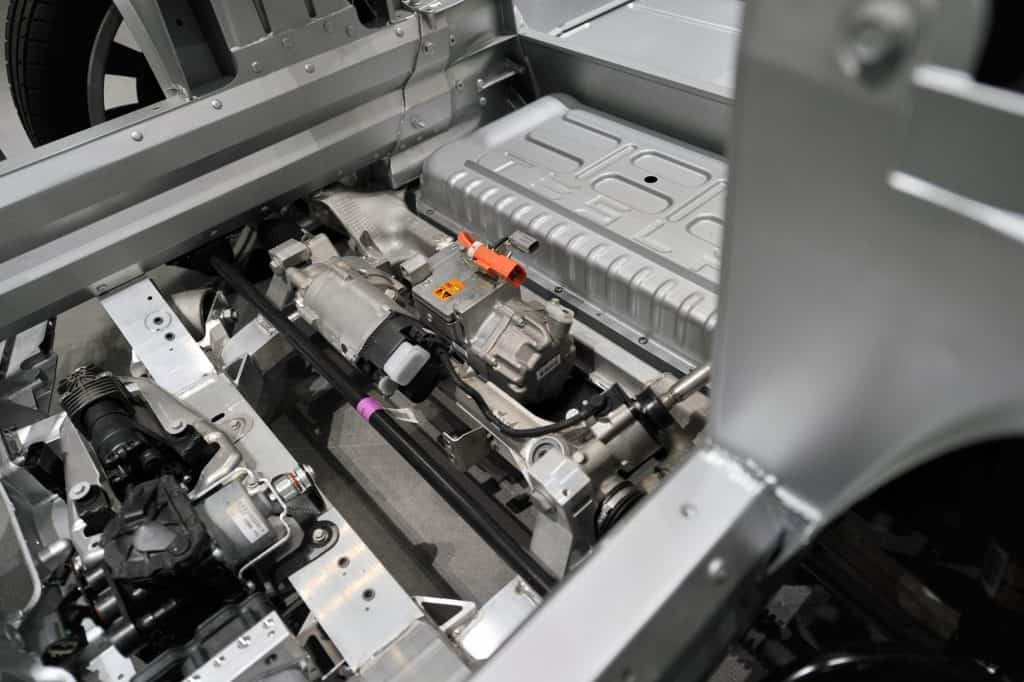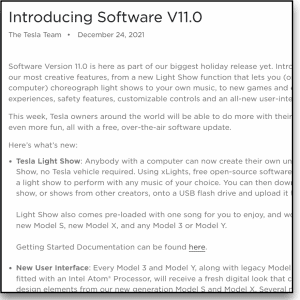Some Tesla drivers have voiced concerns that their car’s air conditioning system is either blowing weakly or sometimes not at all. For some it has raised questions about the differences in a/c systems in electric and gasoline cars and what these differences could mean. In today’s blog, we’re looking at all things connected to the Tesla air conditioning system, and hopefully we can shed some light on these questions.
Tesla AC Systems – How Are They Different?

Anyone who knows a thing or two about a gasoline car and its air conditioning system, should know that it is powered by the work of the internal combustion engine. This naturally raises a question in electric vehicles. If they don’t have an internal combustion engine, then what is driving the all-important compressor that works the refrigerant you need to put through the condenser and other components to eventually create that crisp cool air we all enjoy in our cars?
The answer is actually very simple. Tesla cars also use an a/c compressor the same as a gasoline car, only it’s powered by an electric motor rather than a pulley that is moved by the ICE engine. Tesla once pointed out that their compressor was “similar to the one in a domestic fridge,” but the difference is that this one can work from 400 volts of power.
The Tesla a/c compressor draws power from the car’s battery and pushes refrigerant through the system until it is ready to be blown through the vents, which are located as you’d expect in varying locations in the passenger cabin. The bigger reason for so much speculation in difference in the HVAC systems between Tesla and gasoline cars isn’t in the cooling, but rather in the heating. That’s probably a topic for another blog.
Does EV Air Conditioning Impact Range?

This is an important point to understand when it comes to using a/c in an electric car. Notable platform caranddriver.com did a test in a Tesla Model 3 to see how much impact climate control features had on the EV battery range. What they found was that heat in particular did have a big impact on range, but they didn’t test it for cooling.
The good news turns out, however, that despite the reality of the a/c unit drawing its power from the battery, it actually uses far less energy overall and while there will be some impact on range, it won’t be as noticeable as when you are running the heater on high with the front seats all toasty warm, too.
The heating problem should start to resolve itself more as the heating pump technology becomes the norm as it already is on the new Model Y. The heating pump can save a huge amount compared to previously used resistance heating systems.
Reasons that Tesla’s Air Conditioning is Weak or Not Working
So, why might the Tesla a/c system sometimes either blow weak, have little cooling effect, or not be working at all. Below we’ll explore some common causes.
1. Refrigerant Leaks and Other Mechanical Issues

Since the cooling system does work from refrigerant in the same way that a gasoline car’s a/c system does, then a leak of this refrigerant can often be the cause of a weakening or lack of cooling in the air conditioning process. If the air is blowing but it’s only coming out warm, then this is often a reason for that,
Besides that, there are other direct mechanical problems that would cause the system to stop working. If the electric motor that drives the compressor isn’t working, for example, then you’ll probably get no air blowing at all. The solution to the refrigerant leak or any other mechanical problem is to have them repaired or certain components replaced. This should restore its operation and get it back to normal.
These types of physical problems are mercifully rare in Teslas. When the air conditioning has issues, it mostly found to be the result of our next factor, which centers more around the system in the Tesla car.
2. Firmware/System Faults

On many Tesla models, users have complained about the air conditioning suddenly not working in hot weather, but then after doing nothing and leaving the car overnight, it’s magically working again the very next day. Some users tried to explain this by pointing out that the Tesla will redirect cooling to the battery if it feels that the battery “needs it more.” T
Tesla’s own service technicians have, however, apparently pointed out that this is untrue because the battery is cooled by its own independent system which is a liquid cooling system, not an air cooling one. Tesla has a patent on its special curved coolant tube which allows every cell to be in constant contact with it.
So, what turns out to be the culprit? By and large, it turns out to be software and firmware bugs that manifest in these strange ways. In the majority of cases, this problem can be solved by performing a full reset or restart on the Tesla. Different users seem to find success with different types of restarting.
Some restart the interior display, others shut down the entire car for 2-3 minutes and then reboot. It’s funny how these kinds of turn off and turn on again solutions are still the norm even when technology has come so far since the first Windows PCs for which these techniques were tried and tested.
Restarting, stopping the car for charging, or simply leaving the car overnight all seem to have a possible positive impact on this problem with software and firmware. On top of that, Tesla owners should ensure that they are always up to date on their software and firmware so that they can be sure these types of bugs are fixed. They should also report such bugs to Tesla to make them aware of this issue potentially existing in other cars.
3. Coolant Pipe Problem
One other more physical problem might be found in the coolant pipe. If the pipe is kinked or otherwise damage, this can both cause a refrigerant leak but also hinder the system in other ways. This could certainly contribute to the weakening of the system, if not the downright stopping of it working.
4. Temperature Sensors
Some users have reported that they noticed the car’s reported interior temperature was much lower than it is in reality, which prompted the air conditioning unit to stop blowing cold air through. The same users reported that a reset of the car also seemed to solve this problem.
Conclusion: What to Do When Tesla Air Conditioning Is Weak or Not Working
Based on reports from users and information from Tesla, it seems that the most likely culprit for your Tesla a/c system’s problem is a digital-based one. It’s most likely a firmware or software issue that has to be solved possibly with an update to the software, or by performing some level of reset.
Based on user-reported experienced, a full shutdown followed by a 2-3-minute pause and a subsequent restart is the best way to solve the problem overall. If any air conditioning problem persists, of course, then you should book the Tesla in to a service center to see if it needs some broader repair.
